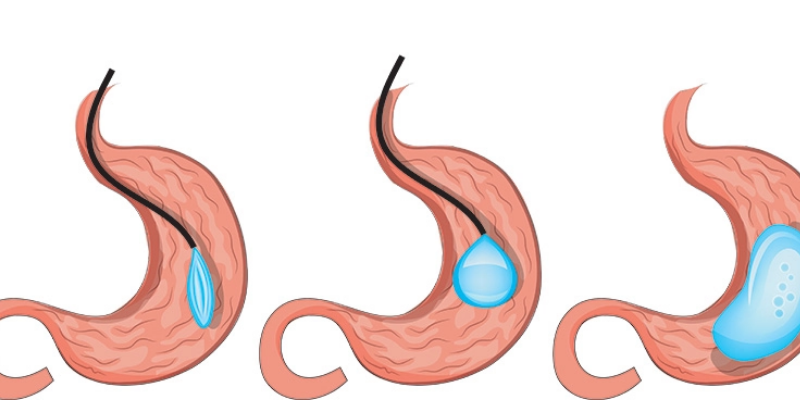Plastic Surgery After Weight Loss
Plastic surgery after weight loss is now recognized as the most serious pandemic illness in developed nations. Increased calorie consumption and decreased physical activity have resulted in a rise in the number of obese persons in society today. Obesity is not only a major health issue in old age, but it is also an unsuitable state for today’s aesthetic sense. As a result, obese individuals work very hard to shed weight. As a result, obesity (bariatric surgery) procedures (stomach reduction, gastric bypass, tube stomach, and so on) are becoming increasingly frequent. People lose weight swiftly and restore their health after undergoing these treatments. However, the skin is often unable to accompany this deterioration. While weakened, the skin, which is excessive and stiff when fat, sags and undesirable folds-loosening occurs.
After-obesity cosmetic therapies (post-bariatric surgery) are using in this instance. Wherever the body sags after bariatric surgery, that region may be restored, sculpted, and extended. Abdominal stretching, breast lifting, 360-degree body lift, leg stretching, arms stretching, face-neck stretching, back stretching, and so on.) Following obesity surgery, the following conditions must be met before beginning cosmetic procedures:
- A minimum of 15 months must have elapsed following the bariatric surgery.
- You should have dropped all of the weight you set out to lose after bariatric surgery. You should not undergo cosmetic surgery when you are losing weight.
- After losing weight, you should wait three months for your body to rebalance and your skin to heal somewhat.
- People who lose a lot of weight quickly following bariatric surgery are frequently impatient and want to begin cosmetic procedures as soon as feasible. It is important to be patient and wait until you have lost all of the weight. In the future, early transactions may need to be revised.
Plastic Surgery After Weight Loss Process
Cosmetic operations following obesity are more time-consuming and demanding than other aesthetic applications. It is just as crucial to shaping the remaining area as it is to remove the drooping skin. People who have had bariatric surgery may also have a variety of other issues, such as vitamin and mineral shortages (B12, iron, zinc, etc. anaemia..), insulin resistance, and protein deficit. As a result, it needs specific planning and intensive post-operative monitoring. These preparations are completing meticulously prior to the surgery in collaboration with the surgeon and the anaesthetic staff. Following the operation, the process is pleasant, with careful hospital follow-up.
Aesthetic operations performing after obesity (post-bariatric surgery) need operating in bigger regions than other aesthetic applications. The drooping skin is generally excessive, and the parts that need to be mould and regaining are tightly wrapped. As a result, the procedures take longer and have huge gaps. Special considerations are giving to post-procedure care, resting postures, and the rehabilitation phase.
As a result, cosmetic surgical operations after obesity are often done in phases. Performing all of the treatments in one session necessitates a lengthy surgery, and the post-operative process is challenging. There is a significant amount of blood loss, recovery is difficult, and problems arise. As a result, staging is always more secure and efficient in terms of recovery. Combinations such as stomach tuck-breast lift, arm lift-leg stretching, and 360 body lift-arm-stretching are conceivable depending on the individual’s condition. All stretching treatments may complete in 2-3 sessions.
Plastic Surgery After Weight Loss Procedure
Transactions may complete in 2-3 month increments. It is critical to let the previously healing region heal and the blood level return to normal. A 360-degree body lift (belt lipectomy) is a treatment that is often finish after significant weight reduction. It shapes the abdomen, waist, and buttocks all at the same time. We normally begin our rehab from obesity with 360-degree body lifts. As a result, the body’s centre and core regions are forming. As with a belly tuck, the scars are at the bottom, at the level of the cesarean section scar, and stay within the underpants.
It then rotates around and enters the butt fold. Scars may hidding under underwear or a bikini with careful preparation. In order to obtain a more tight outcome and better disclose the waist curve in persons who have lost a lot of weight, a vertical incision from top to bottom (from the centre of the rib cage to the pubic area) may be necessary. In this scenario, there is a trail from top to bottom in the midsection, but the outcome is a more tight and smooth abdomen-waist.
A 360-degree body lift (belt lipectomy) is a treatment that is often finish after significant weight reduction. It shapes the abdomen, waist, and buttocks all at the same time. We normally begin our rehab from obesity with 360-degree body lifts. As a result, the body’s centre and core regions are forming. While you lose weight, the buttocks, which are plump and high when you’re overweight, empty out and shrink.,
Plastic Surgery
The only option to re-raise the buttock is to remove the extra skin and drooping tissues in this region and extend the remaining portion. While doing so, the tissues that must remove the mould using sutures, formed into a prosthetic, and inserting into the buttock. As a result, you will have a lifelong buttock prosthesis (autoprosthesis) creating of your own tissues. Placing a silicone prosthesis on the buttocks or injecting fat will not function in the post-obesity patient group until this is finish. On the contrary, it might lead to more difficult-to-resolve issues. The use of an autoprosthesis results in a more upright and fuller buttock. This is possible during the 360-degree body lift.
After this treatment, you must safeguard for at least one year. There is no danger in trying to conceive after a year. You may give birth in peace. Obesity is causing by an imbalance between calories consume and calories expending. Obesity is being exacerbate nowadays by an increase in the consumption of high-fat and high-sugar meals. As well as a reduction in the desire to move. One of the most often utilize procedures, particularly in severe obesity, is bariatric surgery.
Are Weight Loss Surgery Scars Manageable?
The good news is that weight loss surgery scars are often very manageable and can be easily made less visible. Depending on the type of surgery performed, you can manage your scars through regular creams and ointments and stay out of direct sunlight. In some cases, it is possible to reduce the visibility of your scars over time with proactive scar care and stretches or massage techniques. If your scars require invasive options, different types of plastic surgery after weight loss surgery can minimize scarring, such as using dissolvable sutures or lasers to help break down scar tissue. Ultimately, it’s essential to work with your doctor to devise a plan for managing the surgery scars that work best for you. With patience and dedication to scar management techniques, you can ensure that any visible marks from weight loss surgery will fade into the background of your life.

You should also note that certain lifestyle habits can contribute towards improving the appearance of surgical scars, such as regularly applying sunscreen when outside or avoiding extreme temperatures like hot tubs or saunas where possible. To learn more about how to deal with weight loss surgery scars, consult a doctor today.



